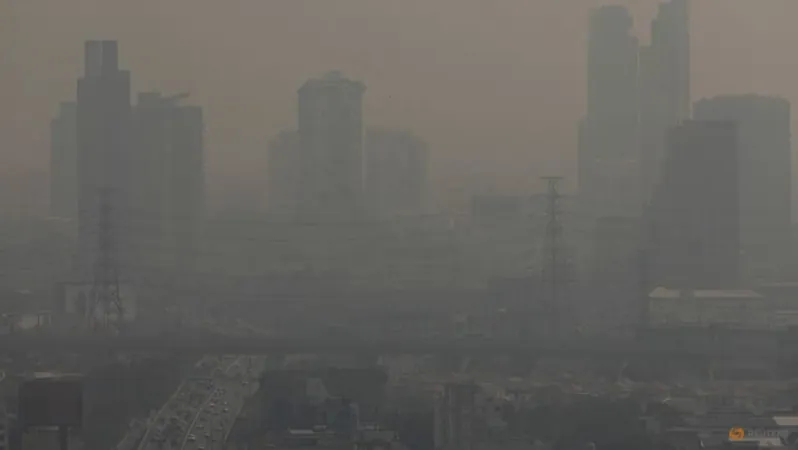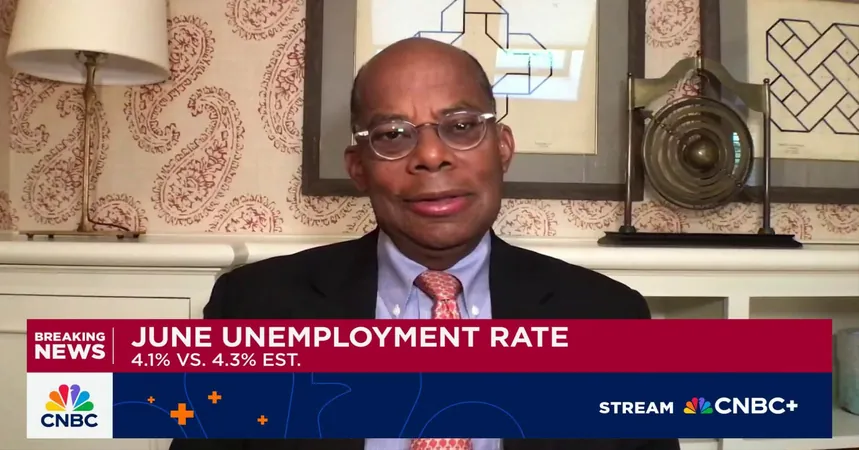
Southeast Asian Cities Dominate Global Pollution Rankings: What You Need to Know!
2025-01-24
Author: Siti
BANGKOK:
On January 24, a shocking report from the air-monitoring organization IQAir revealed that Southeast Asian cities rank among the most polluted in the world. Ho Chi Minh City took the grim title of the second most polluted city globally, closely followed by Phnom Penh, with Bangkok landing in the fourth position and other Southeast Asian hubs not far behind.
In Bangkok, the effects of pollution are painfully visible. A thick haze cloaked the skyline, leaving many residents struggling with health issues. "My nose is constantly congested. I have to blow my nose all the time," lamented Supot Sitthisiri, a 55-year-old motorcycle taxi driver. Workplace concerns area major issue as outdoor workers bear the brunt of worsening air quality.
The air pollution crisis in these cities is attributed to various sources, including crop burning, industrial emissions, and the relentless congestion from heavy traffic. Responding to this urgent situation, the Thai government has temporarily implemented free public transportation for one week—an attempt to alleviate the number of vehicles on the road.
Compounding the problem, over 300 schools in Bangkok were forced to close as a protective measure. Local resident Khwannapat Intarit, aged 23, voiced frustration over the lack of decisive action: “They should take more action, not just announce high dust levels and close schools. It keeps coming back, and it’s getting worse each time.”
In a bid to draw attention to this public health crisis, Thai Prime Minister Paetongtarn Shinawatra took to social media, urging companies and government institutions to allow remote work to reduce road traffic and encourage construction sites to adopt dust suppression measures. “The government is fully committed to solving the dust problem,” she emphasized.
Meanwhile, in Ho Chi Minh City, air quality levels were reported to be a staggering 11 times higher than the WHO's recommended safety levels for fine inhalable particles. Just weeks before, Hanoi was labeled the world’s most polluted city, spurring authorities to issue urgent health warnings and advising the public to don masks and protective eyewear.
In a broader context, governments across Southeast Asia are grappling with the urgent need for long-term strategies to combat air pollution. Initiatives such as introducing a carbon tax and advocating for the use of electric vehicles are being considered as potential solutions. The air quality crisis in Southeast Asia is not just an environmental issue; it’s a pressing public health emergency that demands immediate and sustained action.


 Brasil (PT)
Brasil (PT)
 Canada (EN)
Canada (EN)
 Chile (ES)
Chile (ES)
 Česko (CS)
Česko (CS)
 대한민국 (KO)
대한민국 (KO)
 España (ES)
España (ES)
 France (FR)
France (FR)
 Hong Kong (EN)
Hong Kong (EN)
 Italia (IT)
Italia (IT)
 日本 (JA)
日本 (JA)
 Magyarország (HU)
Magyarország (HU)
 Norge (NO)
Norge (NO)
 Polska (PL)
Polska (PL)
 Schweiz (DE)
Schweiz (DE)
 Singapore (EN)
Singapore (EN)
 Sverige (SV)
Sverige (SV)
 Suomi (FI)
Suomi (FI)
 Türkiye (TR)
Türkiye (TR)
 الإمارات العربية المتحدة (AR)
الإمارات العربية المتحدة (AR)